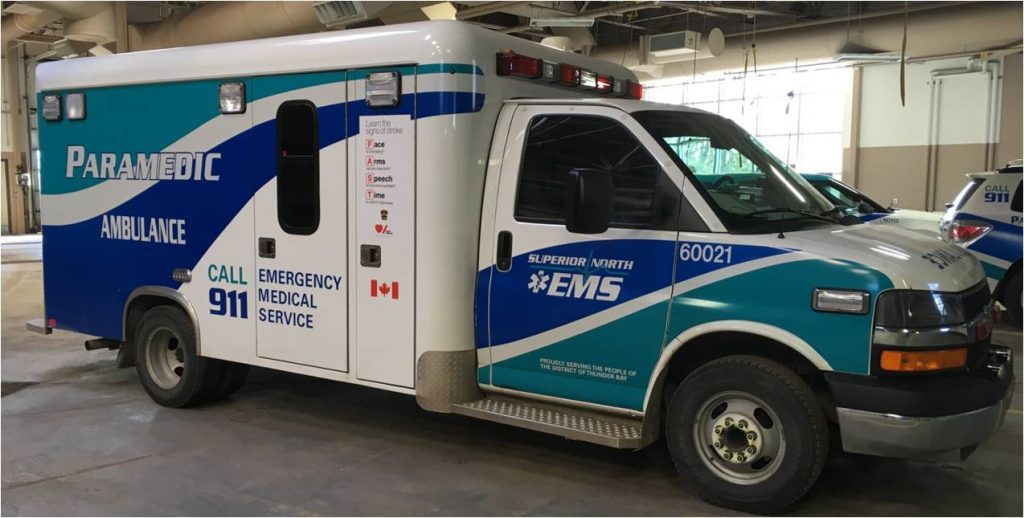Spot a Stroke F.A.S.T. – Stroke is a medical emergency and optimizing pre-hospital care improves patient outcomes.
by Keli Cristofaro, Stroke Community Engagement Specialist, NWORSN
 Stroke is a medical emergency and optimizing pre-hospital care improves patient outcomes.
Stroke is a medical emergency and optimizing pre-hospital care improves patient outcomes.The acronym F.A.S.T. is a tool which makes recognizing stroke easy to remember. Face – is it drooping? Arms – can you raise both? Speech – is it slurred or jumbled? Time – call 9-1-1 right away. A stroke can be mild, moderate or severe which is why F.A.S.T. evaluation and treatment are required.
Even in the COVID-19 pandemic, calling 9-1-1 is the best way for a person experiencing a stroke to receive the most efficient care. 77 percent of Canadians report that calling 9-1-1 is the first thing they would do if someone is having a stroke but according to research, this is not actually the case. In Canada, only 59 percent of people with stroke arrive at the hospital by ambulance. What this means is that 4 out of 10 Canadians experiencing a stroke are not calling 9-1-1. Coming to the hospital by ambulance is the safest and most beneficial way for a person to arrive and receive stroke care in a timely manner. Stroke is a medical emergency.
There are many reasons why a person or family member does not call 9-1-1. These includes thinking they could deal with the situation on their own, not actually realizing that this is stroke, not wanting to cause a scene or just deciding to drive the person themselves. In Ontario, the proportion of people who experienced a stroke that arrived to hospital by ambulance is only 60 percent. In Northwestern Ontario, only 55 percent of our population arrives at their local hospital by ambulance; lower than the province as a whole. After interviewing 70 stroke survivors during the “Why 911” research project, it showed that patients only called 9-1-1, 50 percent of the time.
Northwestern Ontario residents need to be aware of the benefits of calling 9-1-1 and the expertise that paramedics bring to stroke care, especially during the critical first hours. Paramedics are trained to recognize the signs of stroke and mobilize the patient quickly. Paramedics start the time-sensitive management of stroke care including monitoring vital signs and blood glucose. Paramedics also know which hospitals are best equipped to treat a stroke in our vast region. Paramedics explore with the person experiencing a stroke and/or family members to determine the time the person was last known well, any existing health conditions, current medications and allergies. A family member is also encouraged to accompany the stroke patient to the hospital if further information may be needed. The paramedics pre-alert the hospital that a stroke patient is on their way, which is critical in activating the processes of stroke care in the hospital before arriving.
The Northwestern Ontario Regional Stroke Network (NWORSN) recognizes that supporting the Emergency Medical System providers is vital to seamless stroke care. There is a dedicated group of volunteers in Northwestern Ontario on call 24/7 known as First Response Teams. These teams can assist the suspected stroke patients with support as they prepare to hand off to the paramedics as they proceed to timely life-saving services at the hospital. The First Response Teams are a vital link between the suspected stroke patient and EMS.
June is Stroke Month. Spot a Stroke F.A.S.T. Calling 9-1-1 for a suspected stroke even during the COVID-19 pandemic helps to ensure the best possible outcome.
For more information, visit our website at www.nwostroke.ca or contact Keli Cristofaro, Stroke Community Engagement Specialist, Northwestern Ontario Regional Stroke Network via email cristofk@tbh.net or by telephone at (807) 684-6468.
References:
- 2017/2018 LHIN Stroke Report Cards and Progress Reports
- Canaddian Stroke Best Practice Recommendations: Acute Stroke Management 6th Edition Update June 2018
- Heart and Stroke Foundation: Access to Stroke Care: The Critical First Hours, 2015 Stroke Report
- Why 911 Research Project, NWORSN 2018/2019